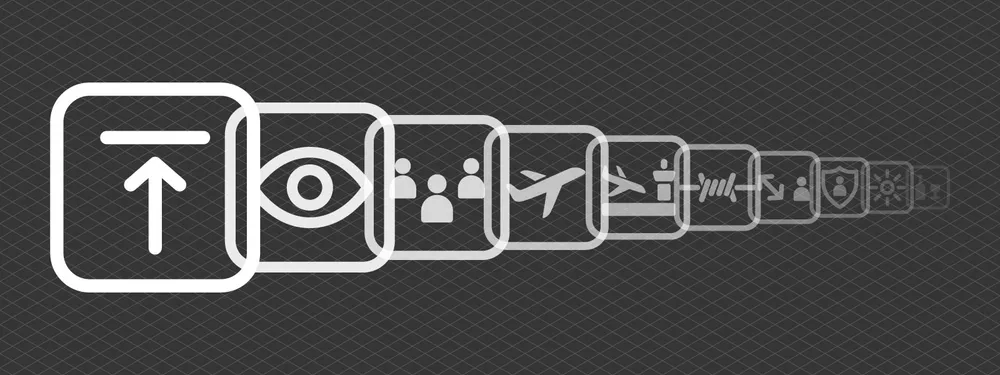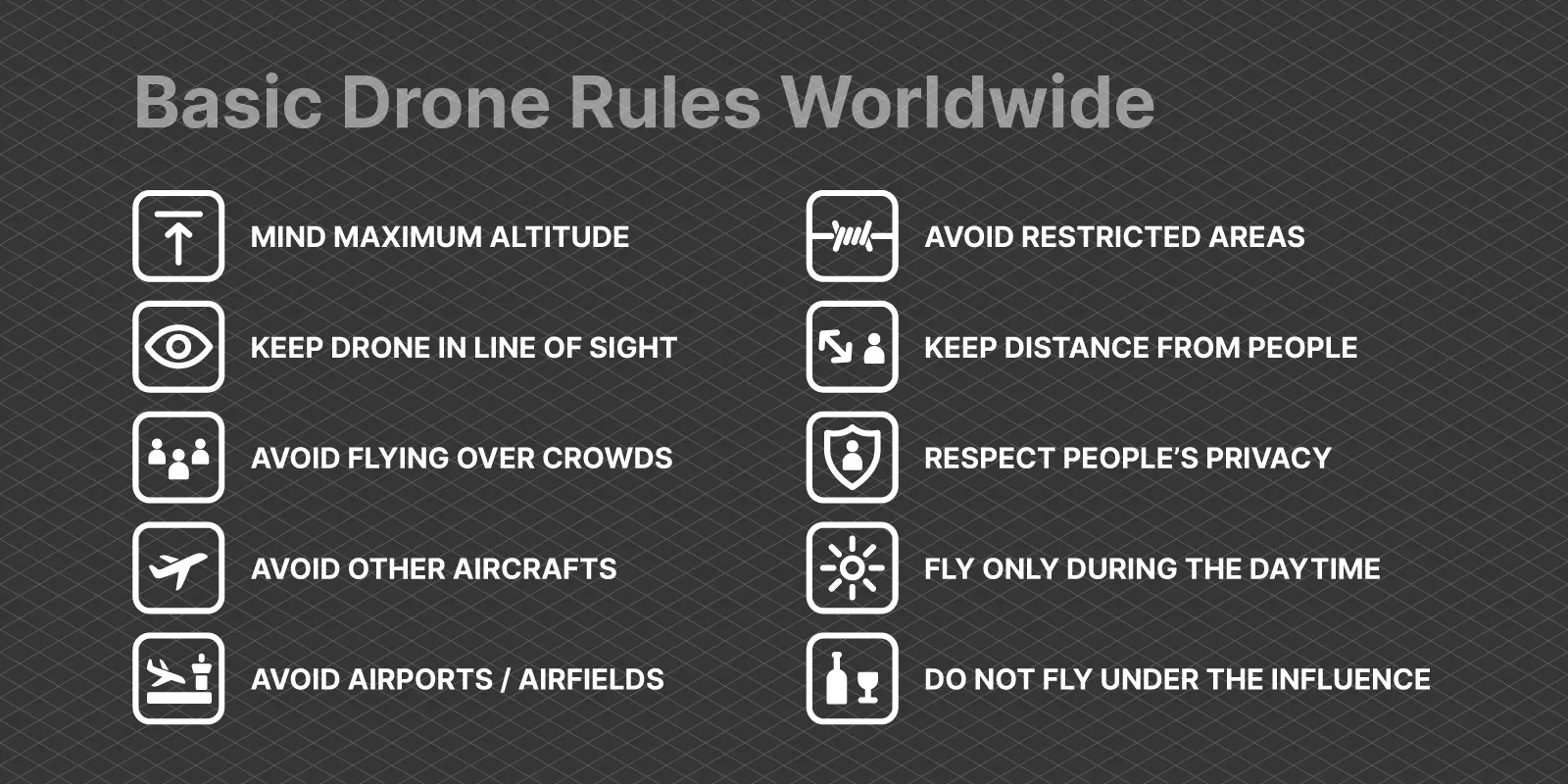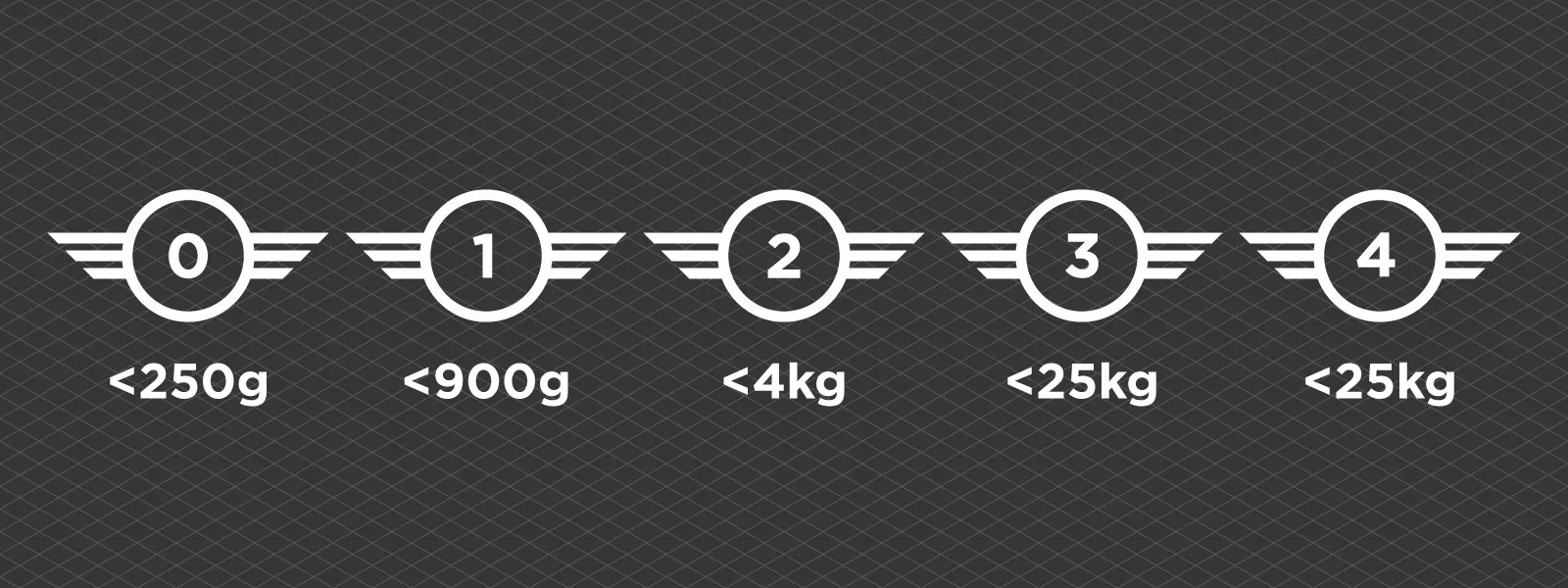Drone Rules and Regulations - Worldwide Fundamentals
 Lukas
Zmejevskis
Lukas
Zmejevskis

Drones are toys, tools, and entertainment. For whatever purpose you use a drone - there are rules and regulations. These rules are becoming more mature, and everyone should understand what is allowed and how you should operate your flying machine. There are quite a few drone rule resources on the internet. We want to provide an optimized, no-nonsense version you can glance through in a few minutes if you just got your drone or want a refresher.
Worldwide Drone Flying Rules
These rules apply all over the world. We checked out dozens of country regulations from all continents, and countries that do have clear regulations all have a few unquestionably fundamental rules:
1. Maximum flight altitude above take-off point - 120 meters or 400 feet.
2. Visual line of sight to the drone at all times.
4. Do not fly over crowds of people, in any case.
5. Do not fly close to other crewed aircraft.
6. Stay away from airports or airfields. Close can be interpreted anywhere from a 5 to 20-kilometer radius.
7. Do not fly in zones where it is expressly prohibited. Usually, it is government, military, or otherwise sensitive areas.
Further, we have a few more widespread rules that we find in most countries with well-defined rulesets:
1. Do not fly closer than 30 meters to other people.
2. Respect other people's privacy.
3. Fly only during the daytime.
4. Do not fly under the influence.
If you adhere to these rules, you will fly legally in many countries. For the context of this article, let us establish these rules as the "basic rules" that apply to everything else we discuss further.
Drone Bans
Quite a few countries ban flying drones altogether or disallow foreigners from bringing them into the country. We found this article to be quite helpful for this topic: https://www.thesilvernomad.co.uk/countries-that-have-banned-drones/
European Union
The EU and the UK have a consistent set of rules. Besides the things we mentioned above, there are rules for drone categories and pilot licensing. In most EU countries, the drones and pilots must be registered, and the aircraft must be marked with unique identification numbers. This is quickly becoming standard procedure before taking flight.
Beginning with 2024, all drones imported into the EU will need to be classified in C categories:
C0 - small drones or toys weighing up to 250 grams. The most common examples are the DJI Mini series drones, homemade FPV drones, and no-name toys from general stores.
C1 - drones and models up to 900 grams. The most common examples would be the DJI Air series drones and the Mavic 3 Classic.
C2 - drones weighing up to 4 kilograms - drones like Mavic 3 Pro, enterprise Mavics, M30 series drones, and M300 series drones.
C3 - C4 - drones up to 25 kilograms - usually serious cinema industry or agricultural drones.
These are the basics of drone categories. These apply to the devices to have a system of sorting the new drones out. The devices themselves fall under 3 subcategories, where things get confusing. These subcategories are describing not the equipment but the flight itself:
A1 subcategory - when you fly a drone that is C0 or C1, and you have your drone registered and completed an online course. Writing and completing the online course is the basis of EU drone laws and must be done by all pilots. If you do not do this - technically, you can not fly any camera drone for any purpose.
A2 subcategory - same as before but with the heavier C2 drone. You need the same registration, online course, and an additional A2 license. A2 license can be obtained by completing an exam in a local civil aviation authority per each country's devised order. If you have an A2 license, you can fly your C2 drone with the same basic rules as the lighter drones in A1.
A3 subcategories - C2, C3, and C4 drones still require essential registration and the online course. Suppose you do not fly close to people or urban areas. In that case, you can fly in this category with heavier drones without doing the A2 exam. The same basic rules apply, but the distance limit is 150 meters from people and urban areas.
However, while all of these categories and classifications are recognized by all countries in the European Union, there are a lot of countries that add their own rules on top. We hope to cover everything in this blog post. Still, we can list European countries which require more research beyond the basic rules. These countries are:
UK, France, Denmark, Belgium, Luxembourg, Austria (stringent system), Hungary, Romania, Bulgaria, Kosovo and Monaco. Drones are legal here, but flying them requires additional things such as insurance or advance notice to the authorities.
You can not fly drones in the Vatican or Ukraine at all. For information about flying in the EU, you can visit https://www.easa.europa.eu/en/light/topics/drones
Canada and Australia
Canadian drone rules are very similar to EU ones, but the flight height is reduced to 90 meters above the take-off point. Canadian no-fly zone map can be found here: https://nrc.canada.ca/en/drone-tool/
The same can be said for Australia; rules are mostly the basics, with main differences arising when commercial vs. recreational use is considered.
Drone Laws in the USA
The same basic rules apply as usual. In addition, the US has what is called Remote ID, which requires drones to have technical capabilities to be identified remotely. This one is for the drone manufacturers to comply with.
For pilots - your drone has to be registered and marked with the registration ID, just like in Europe.
Commercial vs. Recreational Use
In many countries and regions, rules and regulations may be divided depending on the purpose of your flight. For photogrammetry professionals, this is especially important. Commercial use of drones often requires more steps and has a stricter code of conduct. Paid licenses are also much more common; sometimes, these licenses are expensive.
This really does not make any of this less complicated. If you are doing a big job, you must treat yourself as a commercial flier and adhere to the more complex rules that differ from country to country.
Research Resources
Because the rest of the world is a mixed bag of drone rules and regulations - once you are familiar with the basic rules, you should check each country individually if you are traveling. We recommend two approaches:
-
Search for specific information on the country you are interested in and look for an official government site. You are looking for rules imposed by a local aviation authority. So if you want to fly to Thailand (or any other country) and get all of the information straight from the source - google "Thailand aviation authority" and hope they have all the information in a language you can understand.
-
The second approach is looking for data aggregator sites such as https://www.drone-made.com/drone-laws, which seems to have a lot of helpful information about drone laws worldwide, including links to official government websites. Be careful, though, as the information on such sites can still be out of date or may contain a mistake or two.
Conclusion
Drone laws and regulations are tedious, even if we cover just the basics. So, know the basic rules and treat each endeavor to a foreign country on a case-by-case basis. Sometimes, you may not need to do anything, and performing legitimate flights may seem too daunting. Always leave yourself at least two months for research and authorization, especially if you plan commercial flights.

Photographer - Drone Pilot - Photogrammetrist. Years of experience in gathering data for photogrammetry projects, client support and consultations, software testing, and working with development and marketing teams. Feel free to contact me via Pixpro Discord or email (l.zmejevskis@pix-pro.com) if you have any questions about our blog.
Related Blog Posts
Our Related Posts
All of our tools and technologies are designed, modified and updated keeping your needs in mind

Handheld Photogrammetry Construction Interior Scan Use Case
Interior 3D scanning can be useful in a myriad of ways. In this article, I present a scan of a residential building construction site, with its foundation walls and roof almost complete. Further construction will require some visualizations and design according to “the fact.”

Event Planning with Photogrammetry – Use Case from A to Z
Photogrammetry for event planning was the first use case I wrote about on this blog. Now we are back with another venue and an event that will take place in a couple of months.

Individual Property Architecture - Photogrammetry Use Case
If you love doing your own small-scale renovations, planning, and building—this use case is for you. Photogrammetry can provide a framework that allows you to eliminate dozens of questions, replace traditional time-consuming methods, and reach a better result.
Ready to get started with your project?
You can choose from our three different plans or ask for a custom solution where you can process as many photos as you like!
Free 14-day trial. Cancel any time.
.svg@webp)


